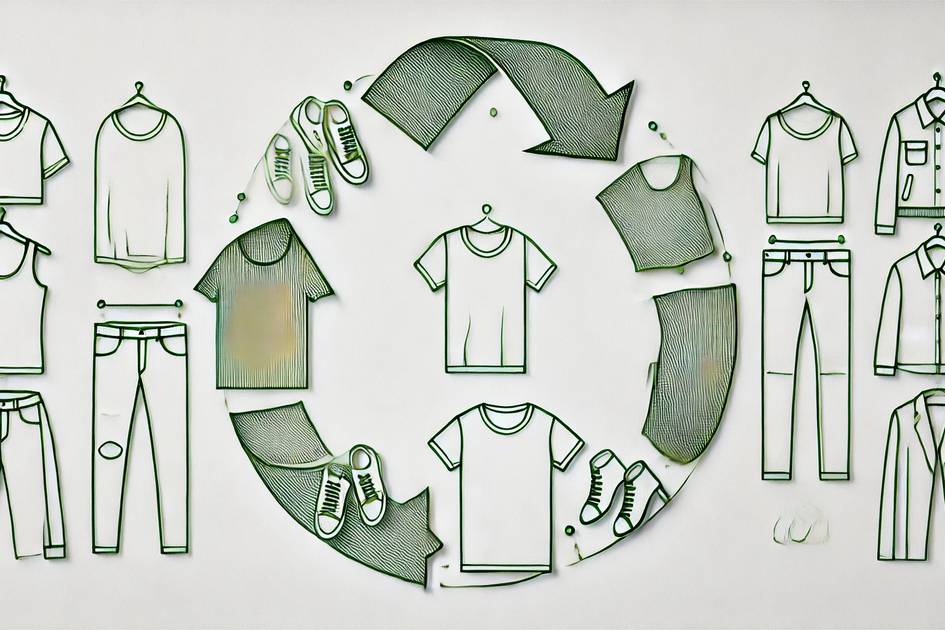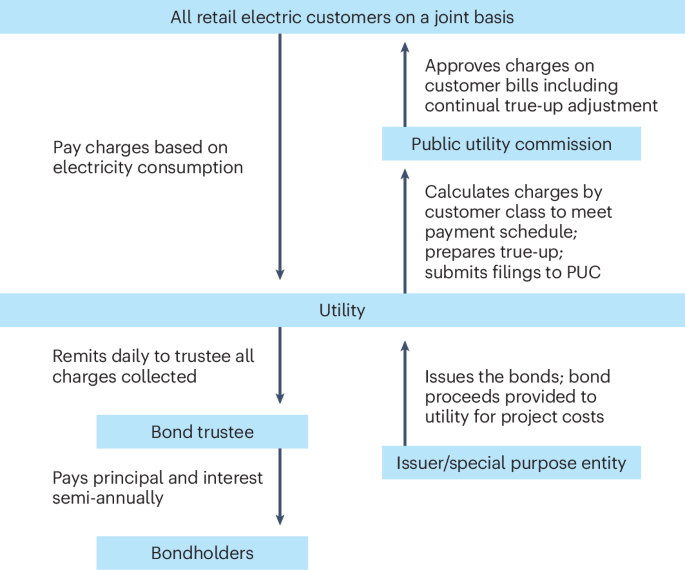‘Fear of regulation’: New BFC-backed report underlines obstacles in development of circular business models
Image for illustration. Credits: AI generated image via FashionUnited. As increasing regulation unfolds in the pursuit of establishing a more circular industry, obstacles and challenges faced by UK brands in their attempts to align with these changes are becoming more and more clear. It is exactly this that is explored in a new report by UK-US consultancy firm Clarasys, backed by the British Fashion Council’s (BFC) Institute of Positive Fashion (IPF). According to data gathered by IPF’s Circular Fashion Innovation Network (CFIN), a programme led by the BFC and UK Fashion and Textile (UKFT) organisation, 82 percent of fashion brands have implemented at least one circular initiative into their business. Challenges arise, however, when trying to scale such programmes. In CFIN’s study, it is revealed that none of the brands with a customer-facing circular business model (CBM) - referring to projects like rental, repair and resale - surveyed have confidence in their ability to scale such initiatives, with financial margins, operational complexities and supply chain constraints cited as key barriers. Elsewhere, around 40 percent of UK brands and retailers also stated that customer communication was a significant challenge in ensuring success for their CBMs. This reflects what the report dubs to be a “fear of regulation” from businesses, many of whom are afraid of committing greenwashing or greenhushing, particularly as consumer scepticism about green claims grows. Consumer communication cited as main obstacle for scaling circular projects A further 47 percent of customers also said that a “lack of awareness” or “limited availability” to CBMs “stops them engaging” with such programmes. Many factors play into this uncertainty, however, such as mistrust in sustainability claims, confusing messaging, a misalignment in cost and value and preconceived notions around secondhand or upcycled clothing items, often bringing doubt over quality. In a press release associated with the report, CFIN programme director at the BFC, Sara Elkholy, said: “There is a strong desire within the industry to improve circularity. However, significant barriers are preventing organisations and customers from buying fashion in a more sustainable way. Complex regulatory challenges, low customer engagement, and significant issues around scaling circularity initiatives are just some of the reasons why fashion organisations have struggled to become more sustainable.” To help overcome these issues, CFIN outlines a roadmap in the report designed to provide a phased approach for brands to engage customers in CBMs. Phase one, for example, focuses on the foundations of sustainable initiatives, centred around developing an approach of introducing CBMs to customers and auditing existing programmes. In the second phase, CFIN suggests scaling circularity across core operations and communication, building up infrastructure and developing incentive models in order to address previously stated challenges. The final phase, dubbed “Circularity Leadership”, requires brands to embed circularity into their company by redesigning supply chains, adopting impact-driven metrics to measure engagement and pushing industry and cross-brand collaboration to help scale solutions. CFIN also suggests for businesses to engage with policymakers in helping to shape future regulations. In his own statement, Loic Le Fouest, a circular economy specialist from Clarasys, said: “This report is welcomed at a time when every industry is feeling pressure to become more sustainable. Bold commitments to circularity often clash with the realities of execution; siloed teams, competing priorities, and resource constraints make it challenging to align vision with action. “At the same time, technological and logistical hurdles, like supply chain traceability, prevent brands from engaging customers and delivering on their promises. Overcoming these barriers is essential to turning ambition into impact and will provide leaders in this space a competitive advantage, futureproofing their brand.”

As increasing regulation unfolds in the pursuit of establishing a more circular industry, obstacles and challenges faced by UK brands in their attempts to align with these changes are becoming more and more clear. It is exactly this that is explored in a new report by UK-US consultancy firm Clarasys, backed by the British Fashion Council’s (BFC) Institute of Positive Fashion (IPF).
According to data gathered by IPF’s Circular Fashion Innovation Network (CFIN), a programme led by the BFC and UK Fashion and Textile (UKFT) organisation, 82 percent of fashion brands have implemented at least one circular initiative into their business. Challenges arise, however, when trying to scale such programmes.
In CFIN’s study, it is revealed that none of the brands with a customer-facing circular business model (CBM) - referring to projects like rental, repair and resale - surveyed have confidence in their ability to scale such initiatives, with financial margins, operational complexities and supply chain constraints cited as key barriers.
Elsewhere, around 40 percent of UK brands and retailers also stated that customer communication was a significant challenge in ensuring success for their CBMs. This reflects what the report dubs to be a “fear of regulation” from businesses, many of whom are afraid of committing greenwashing or greenhushing, particularly as consumer scepticism about green claims grows.
Consumer communication cited as main obstacle for scaling circular projects
A further 47 percent of customers also said that a “lack of awareness” or “limited availability” to CBMs “stops them engaging” with such programmes. Many factors play into this uncertainty, however, such as mistrust in sustainability claims, confusing messaging, a misalignment in cost and value and preconceived notions around secondhand or upcycled clothing items, often bringing doubt over quality.
In a press release associated with the report, CFIN programme director at the BFC, Sara Elkholy, said: “There is a strong desire within the industry to improve circularity. However, significant barriers are preventing organisations and customers from buying fashion in a more sustainable way. Complex regulatory challenges, low customer engagement, and significant issues around scaling circularity initiatives are just some of the reasons why fashion organisations have struggled to become more sustainable.”
To help overcome these issues, CFIN outlines a roadmap in the report designed to provide a phased approach for brands to engage customers in CBMs. Phase one, for example, focuses on the foundations of sustainable initiatives, centred around developing an approach of introducing CBMs to customers and auditing existing programmes. In the second phase, CFIN suggests scaling circularity across core operations and communication, building up infrastructure and developing incentive models in order to address previously stated challenges.
The final phase, dubbed “Circularity Leadership”, requires brands to embed circularity into their company by redesigning supply chains, adopting impact-driven metrics to measure engagement and pushing industry and cross-brand collaboration to help scale solutions. CFIN also suggests for businesses to engage with policymakers in helping to shape future regulations.
In his own statement, Loic Le Fouest, a circular economy specialist from Clarasys, said: “This report is welcomed at a time when every industry is feeling pressure to become more sustainable. Bold commitments to circularity often clash with the realities of execution; siloed teams, competing priorities, and resource constraints make it challenging to align vision with action.
“At the same time, technological and logistical hurdles, like supply chain traceability, prevent brands from engaging customers and delivering on their promises. Overcoming these barriers is essential to turning ambition into impact and will provide leaders in this space a competitive advantage, futureproofing their brand.”


















































































































































































